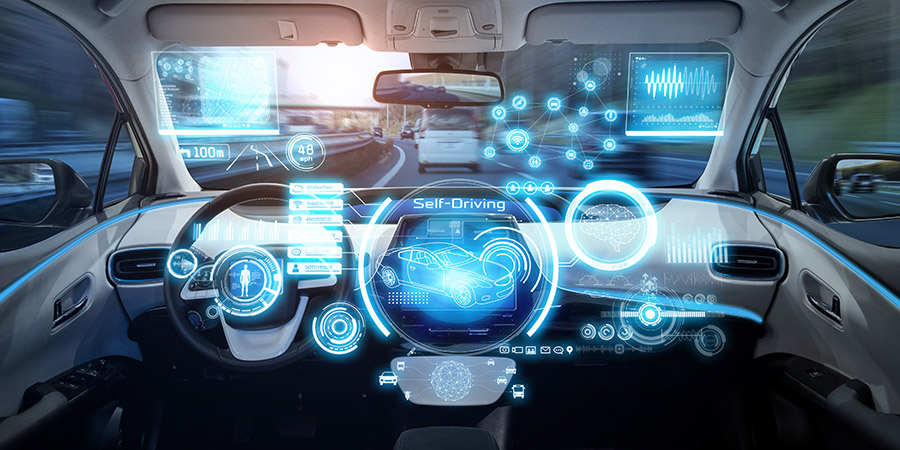In the era of technological advancement, the advent of self-driving cars represents a paradigm shift in the automotive landscape. The promise of autonomous vehicles, navigating our roads with precision and efficiency, has captivated imaginations and fueled discussions about the future of transportation.
As we venture into this transformative age, one fundamental question takes center stage: how reliable are self-driving cars?
This inquiry delves into a multifaceted exploration encompassing the intricate interplay between cutting-edge artificial intelligence, sensor technologies, and the ever-evolving dynamics of the urban environment.
This exploration acts as a portal into dissecting the intricate layers enveloping the reliability of self-driving cars. A thorough examination of safety protocols, technological robustness, and the real-world implications of these autonomous marvels was conducted. Delving into the inner workings of machine learning (ML) algorithms and contemplating the ethical considerations of ceding control to artificial intelligence, these are the promises and challenges that mold the trajectory of self-driving cars.
Safety Protocols: Ensuring Trust in Autonomous Systems
The reliability of self-driving cars begins with a meticulous examination of safety protocols. Advanced collision avoidance systems, emergency braking mechanisms, and cutting-edge sensor technologies collectively form the defensive arsenal of these autonomous vehicles. Understanding how these safety measures operate under diverse driving conditions is crucial to building public trust and confidence in the technology.
Technological Robustness: The Backbone of Autonomous Precision
Diving into the intricate world of self-driving cars reveals a technological symphony where sensors, cameras, lidar, radar, and sophisticated artificial intelligence algorithms harmonize to form the backbone of autonomous precision. This comprehensive exploration seeks to uncover the nuanced workings of each component, shedding light on the pivotal role they collectively play in enhancing precision and bolstering the decision-making capabilities inherent in self-driving cars.
The evaluation of technological robustness becomes a journey into the reliability of these systems under various scenarios, spanning the complexities of urban environments to the challenges posed by adverse weather conditions. In dissecting this symphony, we not only understand how these components adapt and perform individually but also gain insights into their collective synergy, providing a holistic perspective on the technological prowess propelling self-driving cars into the future of transportation.
Real-World Implications: Transforming Transportation Ecosystems
Examining real-world implications involves assessing how the integration of self-driving cars influences traffic flow, accident rates, and the broader transportation ecosystem. By delving into practical consequences, we aim to comprehend the transformative impact of these vehicles on existing infrastructures and how they may reshape the dynamics of daily commuting.
Machine Learning Algorithms: The Cognitive Engines Driving Autonomy
The heart of self-driving cars lies in machine learning algorithms— the cognitive engines that enable vehicles to learn, adapt, and make decisions in dynamic driving scenarios. Understanding the intricacies of these algorithms unveils the potential and limitations of autonomous systems, shedding light on their reliability in navigating complex and unpredictable environments.
Ethical Considerations: Navigating Moral Crossroads
The integration of self-driving cars introduces profound ethical dilemmas, ranging from decision-making in emergency situations to defining accountability for accidents. This section delves into the moral crossroads where technology meets humanity, exploring the challenges of striking the right balance between human intervention and full autonomy.
Regulatory Framework: Paving the Way for Safe Autonomy
Navigating the regulatory landscape is paramount for the widespread acceptance and deployment of self-driving cars. Companies can assess the legal frameworks governing the development, testing, and deployment of autonomous vehicles by analyzing both current regulations and evolving standards at national and international levels. The aim is to ensure that these frameworks provide solid legal foundations that prioritize safety, security, and ethical standards throughout the lifecycle of autonomous vehicle technology.
Public Perception: Bridging the Gap Between Fear and Acceptance
Understanding how the public perceives and interacts with self-driving cars is essential for their successful integration. Investigating concerns, fears, and societal acceptance provides valuable insights into the factors shaping public attitudes and the steps needed to bridge the gap between apprehension and trust.
Industry Developments: Unveiling Breakthroughs and Challenges
Staying abreast of industry developments is crucial for comprehending the trajectory of self-driving car reliability. This section highlights the latest advancements, strategic partnerships, and innovative breakthroughs within the self-driving car industry, offering a snapshot of the challenges and opportunities that shape its evolution.
Comparisons with Traditional Vehicles: Balancing Innovation and Tradition
Evaluating the reliability of self-driving cars necessitates a comparative analysis with traditional vehicles. Factors such as maintenance, durability, and adaptability to diverse driving conditions come under scrutiny to assess whether autonomy brings about improvements or challenges in comparison to traditional transportation models.
Charting the Course of Autonomous Evolution
Anticipating future trends involves exploring potential advancements, increased adoption rates, and evolving societal attitudes toward self-driving car technology. By charting the course of autonomous evolution, we gain insights into the transformative potential of these vehicles and the evolving landscape of transportation.
In conclusion, the reliability of self-driving cars is a multifaceted exploration that transcends technological intricacies. Through this exploration, we can navigate the evolving landscape of transportation, where self-driving cars emerge as both a challenge and an opportunity, shaping the way we move and perceive mobility.











